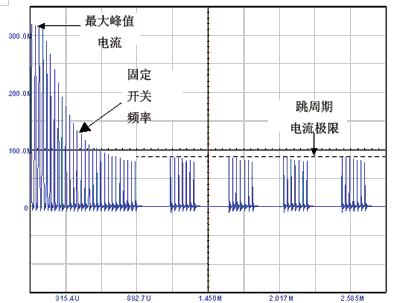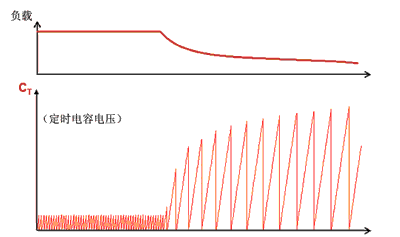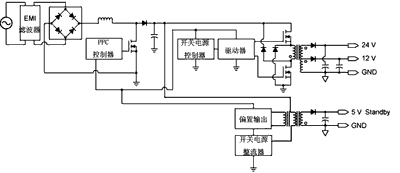Since the British Broadcasting Corporation (BBC) opened the world ’s first public TV broadcast in London in 1936, television technology has made great progress: from the BBC ’s first color TV broadcast in 1953 to the NHK in 1981 The first demonstration of a high-definition television (HDTV) system, etc., varied. Currently, countries around the world are taking actions to upgrade TV signals from analog transmission to digital systems with higher quality. Take the United States as an example. By February 2009, the United States will stop transmitting analog TV signals.
However, "the way of sitting in front of an old-style big box (watching TV shows) in the living room has become outdated. For the TV industry, the development of new technologies is spawning endless opportunities." This is a scene described by the US Newsweek in June 2005. One of the technologies driving these opportunities is flat panel display (FPD). This technology has the following two notable features:
â— Supports high-definition television (HDTV) up to 1080p
â— The screen size is larger, but the overall shape is smaller
Power conversion chain for flat TVs of different sizes
A big difference between a flat-screen TV and a traditional TV is that the cathode ray tube (CRT) used in the traditional TV is replaced by an LCD or plasma screen, and correspondingly, the thickness of the TV and the size of the body are greatly reduced. However, we should pay attention to:
â— The power consumption of flat-screen TVs is relatively high, and the power consumption of flat-screen TVs of different sizes and function combinations will also be different. Compared with CRT TVs, flat-screen TVs consume much more power per cubic centimeter.
â— Consumers traditionally place TVs in the living room, and the noise from the TV body spreads, which may cause a problem. If a cooling fan is added to the TV design, it may not be popular with consumers.
â— In the field of consumer electronics, competition is very fierce and cost issues are very important, and flat-panel TVs are currently priced relatively high.
In this case, flat-panel TV manufacturers apply different power conversion chains according to different panel sizes, thereby optimizing the design of each TV set.
Small size: up to 21 inches
Flat panel TVs of this size usually consume less than 70W. This value is lower than the power consumption requirements of most harmonic content standards, so there is no need to use power factor correction (PFC) technology. In this case, a switching power supply (SMPS) is usually used. In normal mode, the switching power supply must output rated power, while in standby mode, the switching power supply must have a higher energy efficiency.
There are also different processing methods on the market: such as the use of external power supplies, the adapter complies with various standards and codes of conduct. Of course, as an alternative, the power supply can also be embedded inside the TV as an open power supply. This kind of power supply must meet the standby energy consumption requirements, and the energy efficiency in active mode operation is higher, thereby reducing the amount of heat generated in the panel.
In the two ways of using the internal power supply unit and the external power supply unit, the flyback topology is usually adopted. The converter can operate at a fixed frequency or a variable frequency (especially in terms of quasi-resonant mode).
Under rated load and light load conditions, to achieve higher energy efficiency at the same time, the key is to adopt an intelligent switching power supply controller that can adjust the working mode according to the load condition.
In response to this situation, several semiconductor companies have developed some alternatives, taking ON Semiconductor as an example:
â— Skip redundant cycle scheme: fixed frequency such as NCP1200 / 1216/1271, variable frequency such as NCP1207 / 1337. The scheme is shown in Figure 1.

Figure 1 Periodic conversion when the current is minimum in fixed frequency mode
â— Frequency anti-travel scheme: NCP1351
Medium-sized flat-screen TV: between 26 inches and 32 inches
For flat-panel TVs of this size, power consumption has increased significantly, up to 180W. Since the input power is higher than 75W, this application should comply with the European Union IEC1000-3-2 Class D standard or similar regional harmonic content standard. Here, power factor correction (PFC) technology has also begun to apply; and, because the main power supply must be optimized to achieve higher energy efficiency and smaller size. Therefore, the active PFC can play a prominent role in limiting the change in the input voltage of the main power supply unit. At this power level, Critical Conduction Mode (CRM) PFC is the most widely used topology. In this regard, the NCP1606 introduced by ON Semiconductor provides a cost-effective and reliable solution.

Figure 2 When the output power of NCP1351- decreases, the switching frequency also decreases
There are two power conversion chains commonly used in flat-panel TVs of this size range panel.
The first method includes two power supplies (as shown in Figure 3). One of the switching power supplies uses a flyback topology, specifically for backlighting, which can provide 24 V @ 5A output power for the panel; the other switching power supply also uses a flyback topology, which is responsible for the processing of audio and video input and output signals (CAVIO) board power supply, can provide 40W @ 12V power (under certain conditions the voltage is 5V). The latter is also used in standby mode, where a variety of strict light-load energy efficiency standards can be applied.

Figure 3 26 to 32-inch panel using two flyback power supplies

Figure 4 Power supply structure in a flat-panel TV with a panel size between 26 and 32 inches
The second power conversion chain contains only one main switching power supply, which can provide 24V voltage for the panel and 12V voltage for the CAVIO board. The power required here will be within the 170W level. In addition, it also contains another device dedicated to standby mode, the device can provide 10W power in normal mode, while the current consumption in standby conditions is only 500mA.
In order to adapt to higher output power, the topology of the main switching power supply should not be a single-switch flyback, but a dual-switch flyback, although a half-bridge resonant LLC is also used in this area. This topology shares a common topology with panels with larger screen sizes.
This method has a significant advantage, that is, it optimizes the standby power consumption, because in this mode, the functions of the main switching power supply device and PFC will be turned off.
Among these two methods, the dual switching power supply method has many advantages:
â— The power is better balanced, allowing the use of single-switch flyback converters.
â— It eliminates the hidden worry of interactive voltage regulation during the digital dimming of the backlight, and avoids the problem of excessive load changes during this process.
â— It is easier to remove the PFC level in the product models of the United States / North America that do not need to implement the IEC harmonic compatibility specifications.
â— Decoupling panel power from CAVIO power supply. If you need to use different backlight technologies in the future, such as EEFL, FEL and LED, CAVIO power can simplify the evolution process.
Buzzer with Speaker for Alarm System Appliance, This is used for audio, video, radio, automotive, motocycle, bus, bike, truck .
1) Professional wire harness manufacturer for home appliance, Electronic, industrial control, medical and so on. We have good business with some top 500 future company, like Lenovo, Huawei, HP, Eaton, etc.
2) Our wire complies with UL/CE certification; all comply with above ROHS 2.0. Support customer especially request like no red phosphorus. Our company has got ISO2000 certificates.
3) We accept OEM/ODM design, welcome any customized cable too, whenever you have 500pcs or 100K pcs demand, we will reply you quickly and quote you best prices if we can support.
4) Strict quality control, Passed TS Quality control system, All the products are 100% test before delivery.
Wiring Harness Kit,Electronic Buzzer Automatic Wire Harness,Buzzer Automatic Wire Harness,Buzzer Wire Harness
Dongguan YAC Electric Co,. LTD. , https://www.yacenter-cn.com
